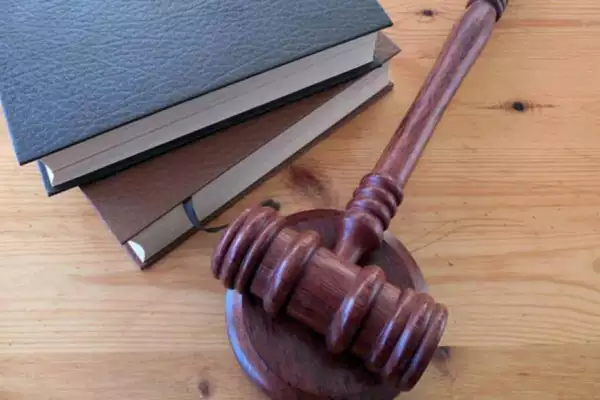The Union Government has recently issued Comprehensive Guidelines for Handling Public Grievances to make grievance redressal time-bound, accessible, and meaningful, aiming to empower citizens and enhance the efficiency of the grievance handling process.
Key Highlights of the Guidelines:
- Integrated Platform:
- A user-friendly grievance filing platform has been established, with CPGRAMS (Centralised Public Grievance Redress and Monitoring System) serving as a common open platform for grievance registration.
- CPGRAMS will operate as a single-window experience for citizens.
- Appointment of Nodal Officers:
- Each Ministry/Department will appoint Nodal Officers for Public Grievances.
- Nodal Officers will ensure prompt, fair, and efficient handling of grievances.
- Ministries/Departments with high grievance volumes will have dedicated Nodal Officers.
- Role of Nodal Officers:
- Effective categorization of grievances.
- Monitoring of grievance pendency and feedback for process improvements.
- Conducting root cause analysis and collating monthly data.
- Supervisory oversight of Grievance Redressal Officers.
- Dedicated Grievance Cells:
- Each Ministry/Department will set up a dedicated Grievance Cell with adequate resources and knowledge of schemes and activities.
- Timelines for Redressal:
- Grievance redressal timelines have been reduced to 21 days.
- If redressal takes longer, interim replies will be provided to citizens.
- Escalation Process:
- Appellate officers and sub-nodal appellate officers will be appointed in Ministries/Departments for grievance escalation.
- Whole of Government Approach:
- Grievances will be addressed through a unified government approach.
- Action taken reports will be filed on CPGRAMS.
- Feedback System:
- Feedback on disposed grievances will be sent via SMS and email.
- Citizens can file appeals to senior authorities if dissatisfied with the redressal.
- AI-Powered Analysis: Analysis of citizen feedback using AI-powered tools like the tree dashboard and intelligent grievance monitoring dashboard.
- Grievance Redressal Assessment Index: A monthly index will rank Ministries/Departments based on grievance redressal performance.
- Training and Capacity Building: Grievance officers will receive training on CPGRAMS through 36 Administrative Training Institutes under the SEVOTTAM scheme.
- Periodic Review: Ministries/Departments are encouraged to review grievance redressal processes in Senior Officers Meetings and enhance communication and awareness.
About CPGRAMS:
- CPGRAMS is an open platform for citizens to register complaints against public authorities in Central Government or States/UTs.
- Genesis: Launched in 2007 by the Department of Administrative Reforms and Public Grievances.
- Achievements:
- CPGRAMS has redressed nearly 60 lakh public grievances from 2022 to 2024.
- The redressal timeline has been reduced from 30 to 21 days.
- Implemented 10-step reforms, including automatic flagging of urgent grievances and leveraging AI/ML.
Other Initiatives:
- PRAGATI Platform: Developed by the Ministry of Electronics and Information Technology (MeiTY), this ICT-based platform addresses grievances from the common person.
- INGRAM Portal: Launched by the Department of Consumer Affairs to address consumer grievances.
- SEVOTTAM Service Delivery Excellence Model: Developed in 2006 by the Department of Administrative Reforms and Public Grievances (DARPG) to enhance the quality of public service delivery.
Ref: Source
| UPSC IAS Preparation Resources | |
| Current Affairs Analysis | Topperspedia |
| GS Shots | Simply Explained |
| Daily Flash Cards | Daily Quiz |
Frequently Asked Question:
What is the purpose of the Comprehensive Guidelines for Handling Public Grievances?
The guidelines aim to make grievance redressal time-bound, accessible, and meaningful, enhancing efficiency in the process and empowering citizens.
What is CPGRAMS and how does it facilitate grievance redressal?
CPGRAMS is a user-friendly grievance filing platform that serves as a single-window experience for citizens, allowing them to register grievances easily.
What is the role of Nodal Officers in the grievance redressal process?
Nodal Officers are responsible for prompt and efficient handling of grievances, ensuring fair treatment and effective categorization of complaints.
How are Nodal Officers appointed within Ministries/Departments?
Each Ministry/Department appoints Nodal Officers for Public Grievances, with dedicated officers assigned to high grievance volume areas to ensure timely resolution.
How do the guidelines aim to enhance the overall grievance handling process?
By establishing an integrated platform, appointing Nodal Officers, and focusing on efficiency and transparency, the guidelines aim to empower citizens and improve the grievance redressal system.



